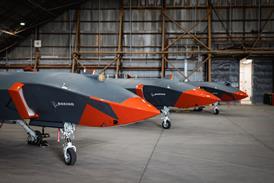Airbus Helicopters hopes to soon secure the first orders for the search and rescue variant of its new EC175, having proposed the 7.5t rotorcraft for several nascent requirements.
Although the first two examples of the twin-engined helicopter were handed over to launch customer Noordzee Helikopters Vlaanderen on 11 December, the airframer has so far only received orders for the oil and gas and VIP transport models.
However, François De Bray, head of EC175 marketing at the Marignane, France-based manufacturer, says it has proposed the Pratt & Whitney Canada PT6-powered super-medium helicopter for a number of search and rescue requirements.
Chief amongst these is for Hong Kong’s Government Flying Service, which is seeking a replacement for its current fleet medium-class fleet. Flightglobal’s Ascend Fleets database records the operator as fielding four utility-roled EC155s, all delivered in 2002, and three AS332 L2s dating from 2001.
Deliveries would commence in the 2017 timeframe, says De Bray. Other undisclosed Asian customers have also been targeted, again as a replacement for existing Airbus Helicopters types.
Early design activities for the SAR model are already under way, with an initial prototype to fly in early 2016. However, Airbus Helicopters says development of the variant will be progressive as customer-mandated mission systems and equipment are integrated onto the baseline oil and gas model.
Meanwhile, the manufacturer continues to evaluate potentially offering an alternate powerplant on the EC175.
Chinese partner Avicopter is already developing its version of the helicopter, the AC352, which utilises twin Turbomeca Ardiden 3C engines.
Marc Allongue, EC175 programme manager, says the company is keen to see how the Turbomeca powerplant performs in service. “We want to see how good it is and the cost of it,” he says, confirming that it may eventually be offered to customers.
Although he plays down suggestions that it intends to switch engine suppliers, he notes that a choice would offer operators “one degree of freedom more”.
Source: FlightGlobal.com












































